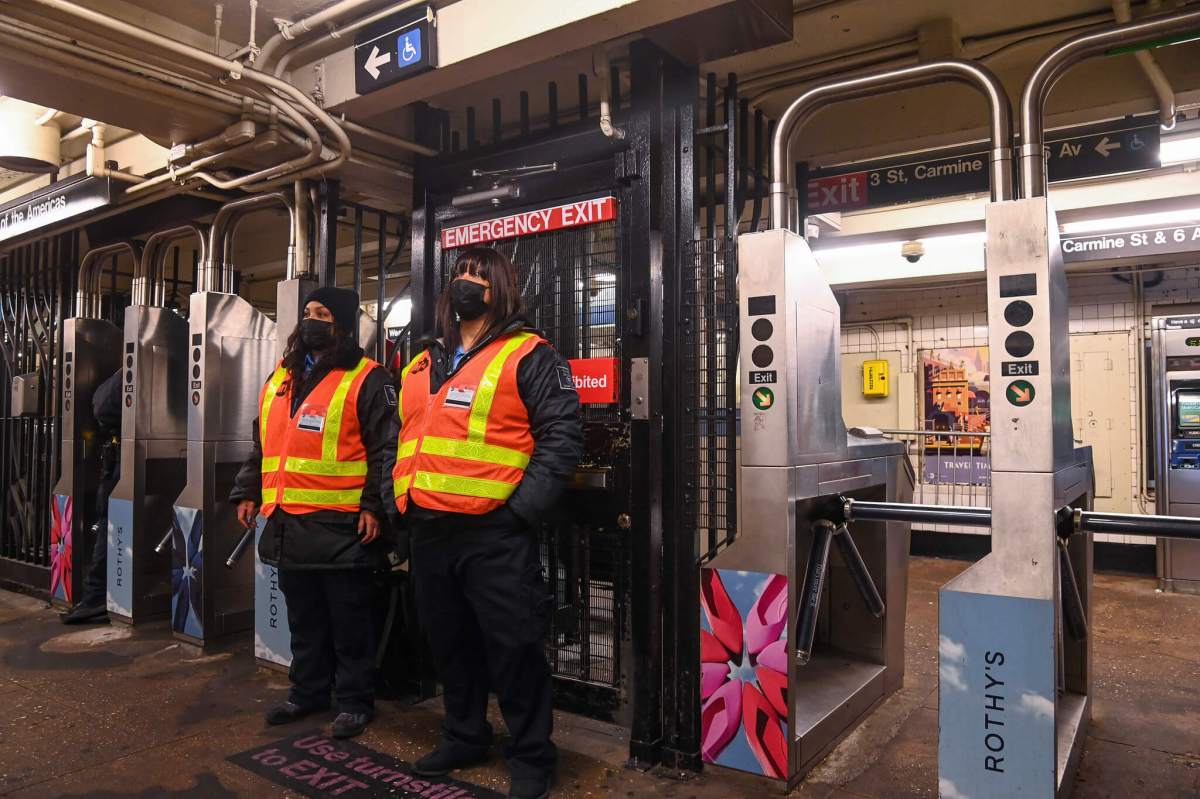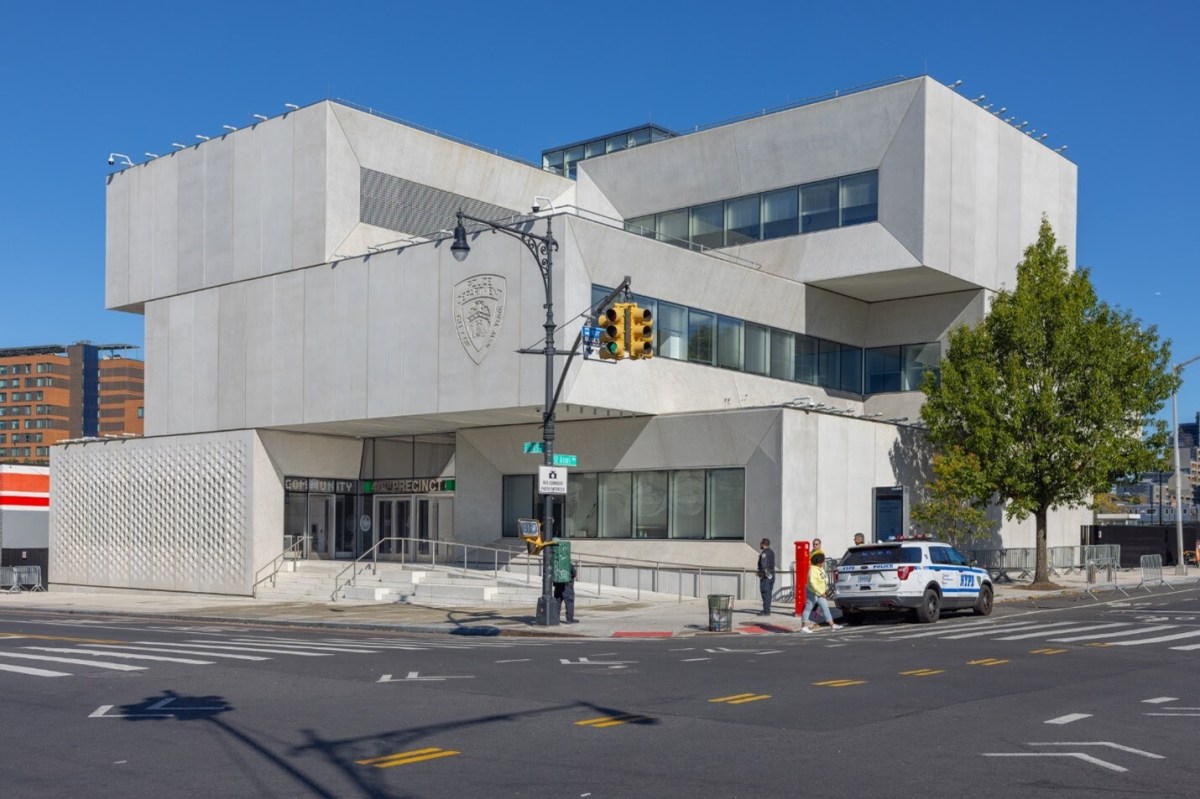The MTA is expanding its deployment of unarmed guards standing sentry at subway turnstiles to deter fare evasion.
A spokesperson for the transit agency said it will bring aboard another 500 gate guards, bringing the total deployment to 1,000 guards deployed throughout the system to fare evasion hotspots. The guards, who work for security contractor Allied Universal, are assigned to work outside emergency exit gates, which transit bigwigs call the “superhighway of fare evasion” as a stream of farebeaters tend to enter through the door whenever it’s opened.
As of May, guards were deployed at 50 stations at any given time, and the MTA says stations with deployments have seen decreases in fare evasion by up to 30% since the guards were first deployed late in 2022.
The extra deployment of the guards — who are not deputized as law enforcement but are intended as a deterrent — is set to cost $35 million. The news was first reported by nonprofit news site The City.
The MTA is struggling with a growing prevalence of fare evasion, complicating the post-COVID recovery of the mass transit system. The agency says fare evasion costs it up to $800 million annually in foregone revenue; in the first quarter of 2024, turnstile hoppers accounted for nearly 13.6% of subway riders.
Besides gate guards, the NYPD has surged its presence by thousands of officers into the subway system. The MTA is also reconfiguring turnstiles to prevent “back-cocking” and piloting delays to the opening of emergency exits, and is also seeking to redesign its turnstile to make it harder to jump.
Nonetheless, fare evasion remains a much larger problem for the MTA on the bus, where nearly half of riders are not paying the fare. The MTA’s main attempts to deter farebeating on the bus involve deploying fare inspectors called EAGLE Teams to local and select buses as well as large bus stop hubs, but the agency admits its strategy hasn’t been particularly effective.






































